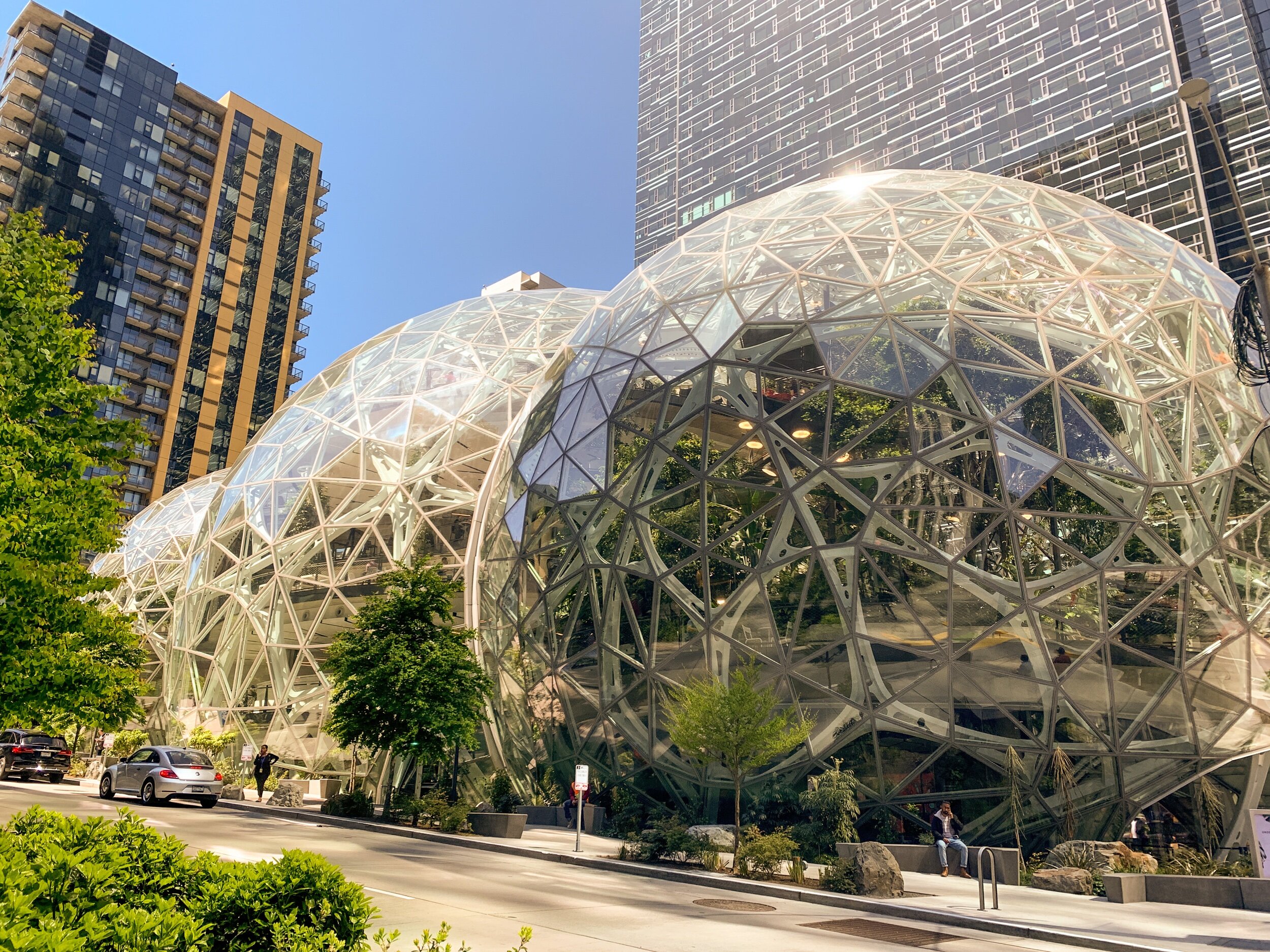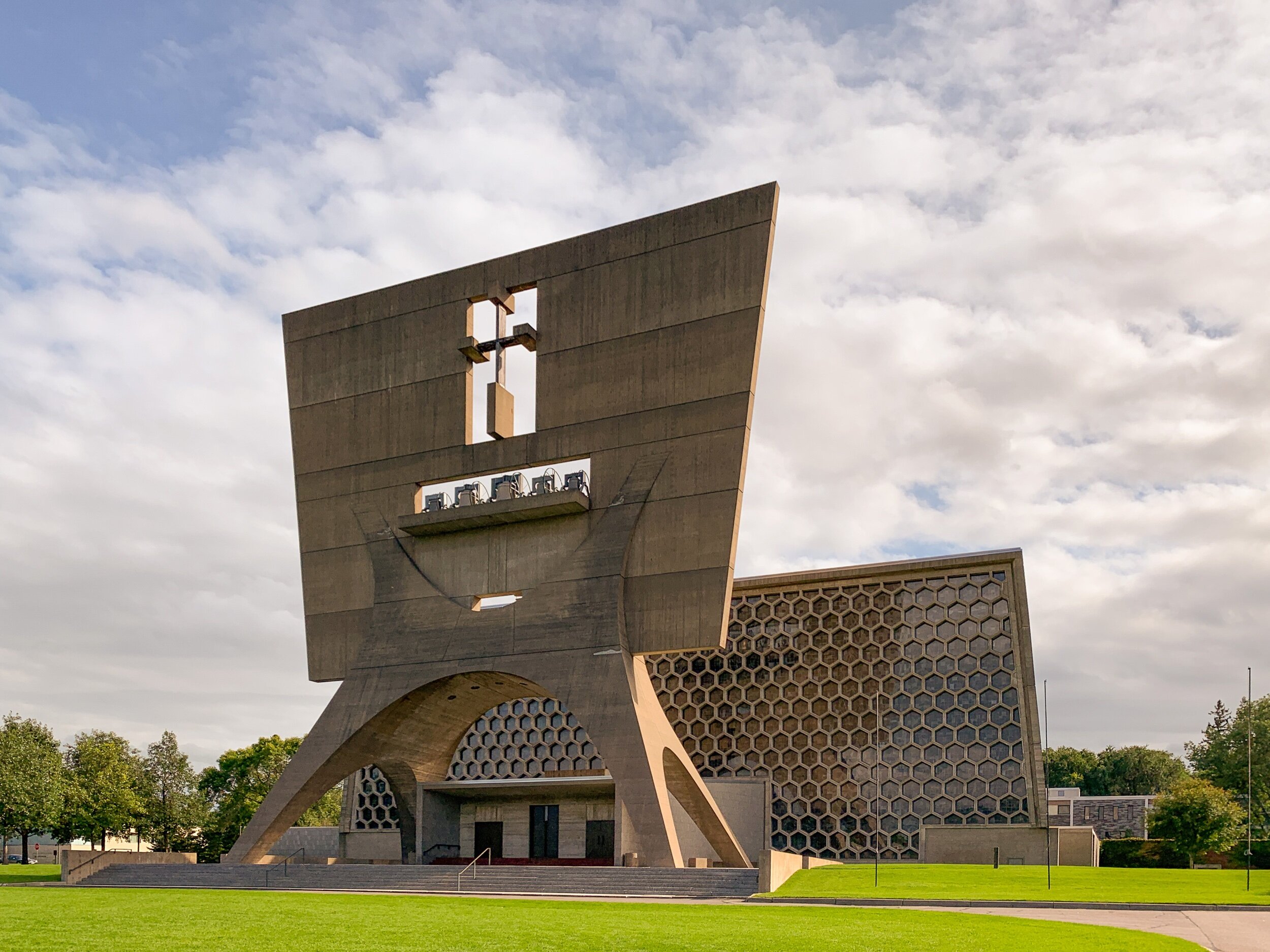Seattle and The Spheres

While in Seattle for an International Living Futures Institute conference last May, I had the opportunity to visit the well-known Amazon Spheres, designed by NBBJ. A friend works at Amazon and graciously took me up on my request for a tour of the collaborative work space and plant conservatory, which is closed to the public and available only for employee use (also - see Note below).
My tech friend kindly humored our small group of architects and building science engineers (rounded out with a knitwear designer and a physician), and he did his best to answer our myriad of questions about the design, performance, and use of the Spheres, however out of his wheelhouse. He had not actually spent any time working in the Spheres before, outside of taking a tour or two. Programmatically the Spheres are a lush employee lounge and workspace, a perk provided to employees (Amazon is notorious for not providing as many perks to their employees as other major Silicon Valley tech companies like Google or Facebook do). We were all able to appreciate the plant life and contemplate the unique experience of being in an artificial tropical environment in the middle of the city.
And a unique experience it was. Upon entry (beyond the security / check in desk and doors), you are hit with thick, humid air. There are tropical plants displayed on lit pedestals, tropical fish tanks, “natural” paths along which to wander, the sound of running water, and multi-story green walls. We delighted in the environment, in the light, in playing with the Birds Nest, looking at design details and structural connections, in the exotic orchids, and trying to figure out how things were irrigated and how carnivorous plants were fed. While beautiful - what a technological feat to have such a highly controlled environment in order to maintain the abundance of plant life! What visual and olfactory beauty of the plants themselves! - we did begin to question the design and efficiency of the fully glazed spheres, and the impact it has on environment, Amazon employees, and the city of Seattle. How did the Spheres meet energy code requirements? There were so many steel connections to the glass facade in the double envelope that appeared thermally unbroken. What was the cost of heating and humidifying the plants housed in the Spheres? Why were lights on during a bright, sunny day? There is increasing economic inequality in the city of Seattle, exacerbated by Amazon - are the Spheres just another physical manifestation of that? Were the multiple IFLI tours held throughout the conference appropriate for an organization that strives for a complete reduction in energy use and carbon neutrality in the built environment considering the amount of energy used in the building as well as the focus on non-native plant species flown in from around the world?
In addition to the Spheres, I was also able to take the ferry to Bainbridge Island as a part of a residential tour (the expense - and ego and excess? - of these residences are thoughts for another post). My ferry out to the island had a coast guard escort which was an odd treat to this non-Seattleite.
Note 1: The Understory - the half-ground / half-subterranean level of the Spheres - is open to the public on a daily basis and showcases the design, construction, and story behind the project. Public tours of the Spheres themselves are conducted by reservation on an every-other week or monthly basis.
Note 2: I purchase many, many things off of Amazon. It is probably the first place I look for the majority of my online purchases.














